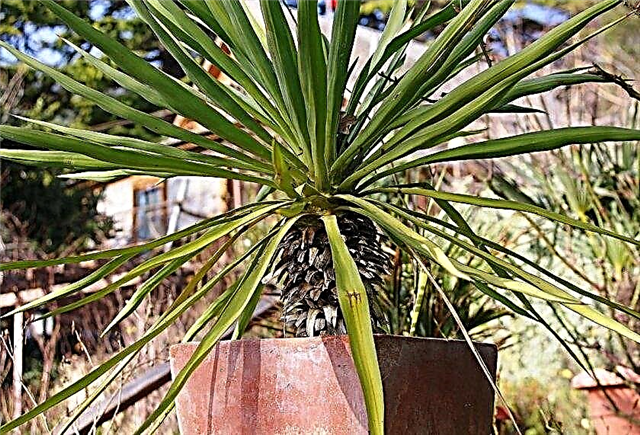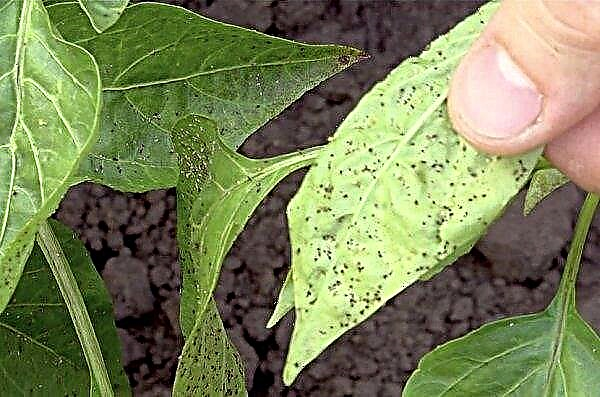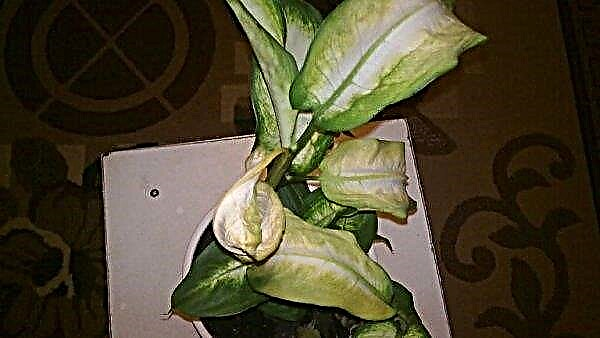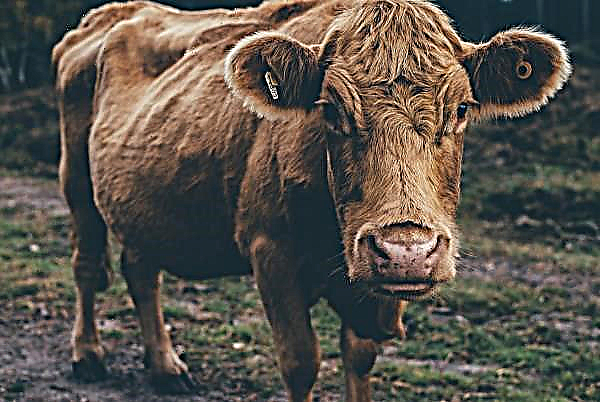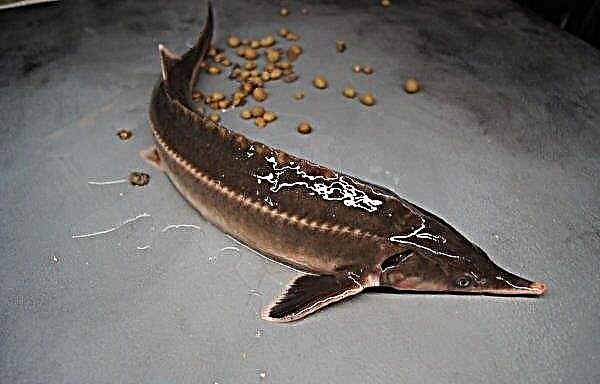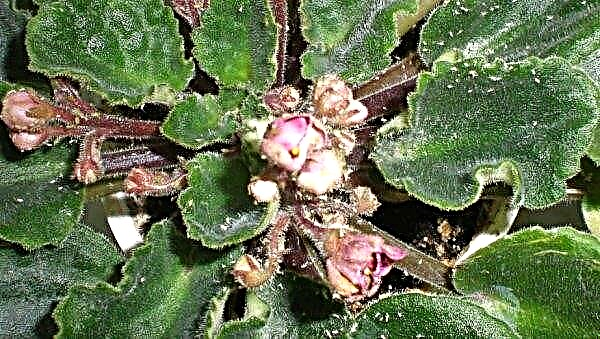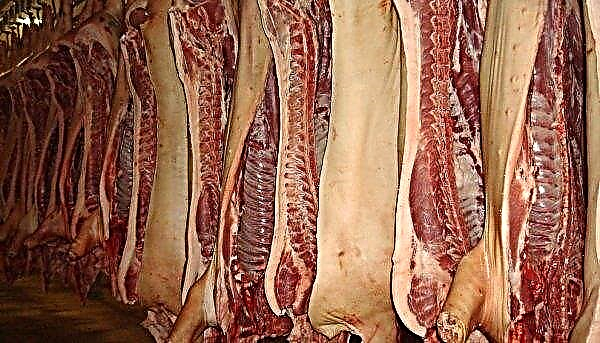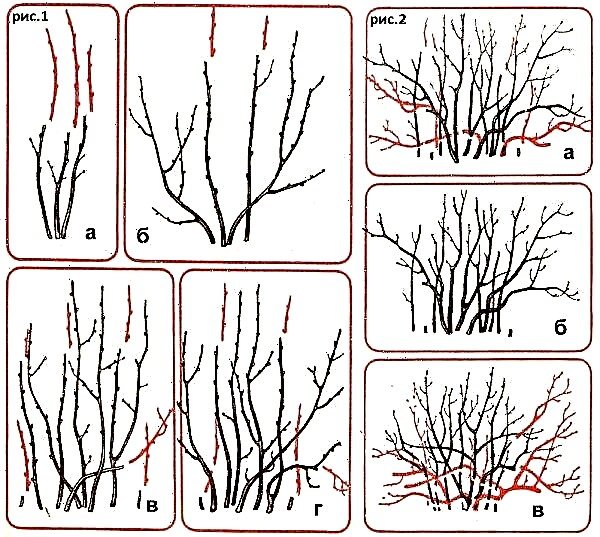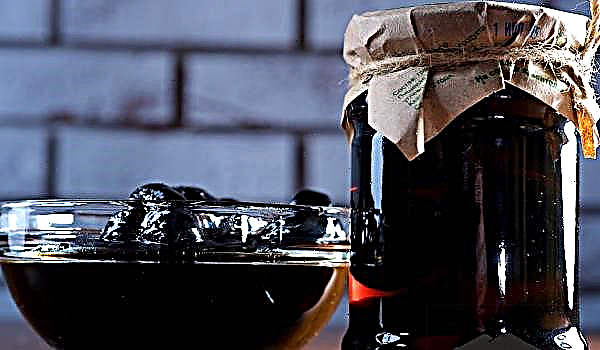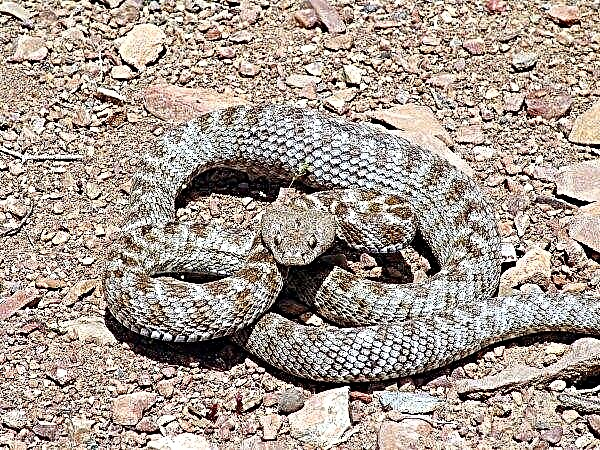Carrots are one of the few vegetables growing in the temperate climate zone that can be kept fresh until the future harvest, while almost without losing their useful qualities, which, given the high content of vitamins and other biologically active substances in these root crops, make them especially valuable during vitamin deficiency.
However, any gardener who is going to grow carrots in his own personal plot, you need to know that not all varieties of this vegetable are equally well suited for long-term storage. For this purpose, only late-ripening fruits should be used, for example, the excellent super-yielding hybrid Sankin's love F1, which will be discussed in this review.
Did you know? Under the brand name “Sankina Love”, not only carrots are produced. There are also hybrids of cabbage, cucumbers and sweet peppers of the same name, and all of them, despite the lack of state registration, managed to earn rave reviews from farmers.
History of Variety Breeding
Sankin's love carrot F1 was bred by the breeders of the well-known Moscow agricultural firm “Ural summer resident”, which has been actively engaged in the production of seeds and seedlings for over 80 years, which are distinguished by increased endurance and intended, in particular, for growing risky agriculture in the regions, including the Urals and Siberia.
Since the Sankin hybrid of love is not included in the register of selection achievements of the Russian Federation, there is no official information on its zoning zone.

However, taking into account the manufacturer’s specialization and relying on numerous reviews from gardeners, it can be argued that this carrot can be grown with equal success both throughout the middle part of the European part of Russia, including the Central, Central Black Earth, Middle Volga and North Caucasian economic regions, and colder areas of the Volga-Vyatka, North-West, as well as the Ural, West Siberian, East Siberian and Far Eastern regions, where for protection against cold weather a hybrid, if necessary, cover they whine with a film.
Sankin’s love is growing beautifully in Ukraine, Moldova, and other countries neighboring with Russia.
Description of root crops
Sankin's love is distinguished by the elongated cylindrical shape of root crops with a blunt tip.
Average carrot sizes:
- length - from 20 to 25 cm;
- width - from 2.5 to 3.5 cm;
- weight - from 85 to 120 g.
By type, this hybrid is closest to Nantes, because, in addition to its characteristic form, it has a crunchy, juicy, tender and very sweet flesh inherent in this group, which children love.
The fruit core is not expressed, the skin is thin, the color of the pulp is monophonic, saturated, red-orange. The taste characteristics of carrots are beyond praise, for which the hybrid consistently receives the highest tasting score.

An additional advantage is the very high content of carotene in fruits, which is why they are recommended for the preparation of baby and diet food, and for this purpose they can be used both fresh and processed.
The purpose of the fruit is universal. The hybrid is suitable for making juices and mashed potatoes, boiling and baking, but even without heat treatment, this carrot is very good.
Grade characteristics
In terms of Sankin's maturation, love F1 is classified as late ripening. Root crops begin to reach biological ripeness approximately in 120–135 days from the moment of mass germination.
Did you know? Parthia Tsar Mithridates IV, who ruled in the 1st century of the new era and was known for constant wars with Rome and at the same time with his brother Vologes II, who was the ruler of the same state, but its eastern part, had every reason to be afraid of poisoning, but he believed that it would neutralize poison can be with ... carrots.
The creator of the hybrid characterizes it as super-yielding, and one of the main qualities of this carrot is that its productivity is ensured even on heavy soil, where the vast majority of varieties of this crop grow very poorly.
Frost resistance and resistance to adverse weather conditions make it possible to grow Sankin's love almost everywhere without great effort: carrots are not prone to cracking, flowering and shooting, rarely get sick and are slightly affected by pests, give minimal losses in the process of collection (does not crack and does not break) ), finally, like all late-ripening varieties, it has excellent keeping quality, without losing, at the same time, either its presentation, taste, or useful properties.
Advantages and disadvantages
Assessing the Sankin hybrid love, gardeners almost unanimously come to the conclusion that this carrot consists of virtues alone.

- Indeed, the hybrid is distinguished by:
- ultra high productivity;
- excellent taste characteristics;
- rich chemical composition with a very high content of sugar and carotene;
- universal purpose and the possibility of inclusion in children's and medical diets;
- unpretentiousness to the composition of the soil;
- large root vegetables of the correct form and the same size;
- frost resistance;
- lack of tendency to shoot, flaccidity, cracking;
- low losses during harvesting;
- good transportability;
- very long shelf life.
The hybrid has no objective flaws. We can talk about the fact that carrots ripen long enough, however, it is this quality that provides root crops with good keeping quality. In addition, any gardener should understand that high-yielding varieties and hybrids usually have higher requirements for the presence in the soil of all the nutrients necessary for their development and the observance of other agrotechnical conditions, without which you cannot count on the opportunity to enjoy all the above advantages.
Features of cultivation and care
Carrots, in general, are unpretentious culture, but not everyone succeeds in growing a good crop in their beds. The reason is that this vegetable needs quite certain conditions, which must be created already at the stage of choosing a suitable place for it on the site, as well as observing the timing and technology of planting itself.

Soil requirements
As it was said, Sankin's love can grow and even bear fruit well on hard soil, however, this does not mean at all that this type of soil for the hybrid is preferred.
However, if the soil in the plot is black earth, it is not necessary to adjust its composition before planting carrots, but it is better to add a mixture of peat and sand (at least 10 l per 1 sq. M) to clay soil. On peat soil, provided there are no signs of waterlogging, Sankin's love can be grown quite successfully if sand is added to the substrate before planting.
Important! The ideal soil for the Sankin hybrid is love - sandstone or loam. On this soil, carrots grow larger, sweeter and more juicy than on chernozem.
Carrots need soil rich in organic matter (the minimum humus content required by the culture is 4%). However, planting fresh organic fertilizers, especially manure, is strictly prohibited: in such soil, carrots will grow clumsy or “horned”. Therefore, this type of fertilizing should be laid in the ground, at least a year before planting.
Another condition when choosing a place for a bed is good drainage and the complete absence of the risk of stagnation of water (under such conditions, root crops grow very small, crack or simply rot). The optimum acidity of the soil is from 5.7 to 6.9 (neutral or slightly acidic reaction).

Another important condition is lighting. Carrots are one of the most photophilous cultures that are grown in our latitudes, so it is necessary to highlight the most open and sunny area for it.
The high need of the hybrid for moisture and, at the same time, its complete rejection of stagnation of water in the soil, determines the following requirement for the bed - it must be as even as possible so that the water is evenly distributed during rainfall and irrigation.
Did you know? Regular consumption of carrots is believed to reduce the likelihood of developing lung cancer, but this rule is only valid for those who do not smoke. Surprisingly, for smokers it has the exact opposite effect.
The site for growing Sankin's love needs to be selected taking into account standard crop rotation rules, since in a place where carrots and other crops related to it (according to soil composition requirements and the most characteristic pests) used to grow, the hybrid will never yield a good crop.
| Good precursors for carrots are: | Sankin's love should not be planted after: |
|
|
Sowing rules
Traditionally, Sankin love carrots are planted in the spring. However, rational gardeners sometimes apply the winter method of sowing to this hybrid (in late October or early November). This allows you to get an earlier crop of root crops, which are used for immediate consumption, and under the bookmark for the winter, the usual, spring, method of planting is used.

As for the timing of sowing seeds, then, strictly according to the rules, for this you need to wait for steady heat. In the Central region of Russia, the right moment comes at the end of April, in the more northern regions you should wait another 1.5–2 weeks, while southerners can carry out the procedure at the end of March. The main thing is that the soil in the upper layer warms up to at least + 6 ... + 7 ° C, and the night frosts are left behind.
Regarding the pre-sowing preparation of seeds of the Sankin hybrid, the love situation is ambiguous. Many experts note that preliminary soaking, dressing and stimulation does not have a decisive influence on the speed and intensity of germination, therefore, it is advised to limit oneself only to a preliminary check of the quality of the seed material by planting several experimental specimens of the house in a separate cup.
Important! Both in winter and in early spring sowing, only dry seeds are laid in the ground. Soak them only if planting is carried out in well-warmed soil.
Another important precaution: seed disinfection by soaking them in potassium permanganate, boric acid and other similar preparations is carried out only after preliminary soaking, since aggressive solutions can destroy dry seeds.
Before sowing, the bed should be dug up, and if it was prepared in the fall, just loosen it. Next, mark up future rows. The easiest way to do this is with wooden pegs driven in on both sides of the row and, if necessary, additionally in the center. The row spacing for the Sankin hybrid love should be about 20 cm. Then, along the planned rows, grooves are dug with a depth of not more than 1.5–2 cm and watered with plenty of water.

When the water is absorbed, the layout of the seeds is carried out and their subsequent cover with earth. Sometimes carrot seeds are planted by the tape method. It consists in the fact that dry seeds are pre-glued with a stick of brewed starch onto toilet paper at a distance of 4 cm from each other, which allows you to immediately control the number of seeds in rows and significantly save their number, due to the absence of the need for intensive thinning in the future .
The paper tape, along with the seeds, is laid on the bottom of the furrow and covered with earth, as in the usual planting method. This method is quite time-consuming, but still very convenient, but has its drawbacks: with poor germination, the garden bed may turn out to be too rare, and the gardener will not receive the expected carrot yield.
Important! After digging the furrow, the bed should not be watered, since this leads to uncontrolled and uneven penetration of seeds into the soil, which significantly slows down the germination process and negatively affects the overall germination rates.
The first shoots of carrots appear no earlier than 2-3 weeks after planting. This process can be slightly accelerated by covering the garden bed with a film or a light agrotechnical canvas to create a greenhouse effect. Immediately after the appearance of the shoots, the shelter must be removed.
Watering
Sankin's love is a hygrophilous hybrid. It is necessary to water the bed regularly and abundantly, trying to ensure uniform soil moisture and at the same time to prevent stagnation of water in it. With great gratitude, carrots also respond to sprinkling, as for the “lower” watering (under the root), it is better not to water it or directly from the hose, and with the drip irrigation method, it is enough to turn it on every 2-3 days, which will significantly reduce water consumption and prevent both overdrying and root decay.

The intensity of watering at different periods of the growing season of carrots varies. So, if at the initial stages the culture needs frequent, but dosed moistening, then, as the root crops are formed, the intervals between irrigation are reduced, and the amount of water used in this case, on the contrary, is increased so that the earth is saturated with moisture to a depth of at least 15 cm
Important! You can not pour carrots with cold or hard water: if tap water is used for irrigation, it must first be kept for several hours in the sun so that it settles down and warms up.
To improve taste, increase sweetness and extend the shelf life of fruits about 30 days before harvesting, watering is stopped completely, only slightly spraying the top layer of soil immediately before harvesting, so that it is easier to remove carrots from the ground.
As a hint, you can use the following water consumption rates when watering Sankin hybrid love at different phases of the growing season, however, you need to understand that we are talking about averaged indicators that are adjusted depending on specific climatic and weather conditions:
| Watering period and method | Water consumption per 1 sq. M beds, l (in parentheses are the consumption rates when using drip irrigation) | Watering frequency |
| May | 4–5 (2–3) | Every 3-4 days |
| May (sprinkling) | 35–40 | 1-2 times a week |
| June | 10–12 (4–5) | Every 5-7 days |
| July | 12–15 (5–6) | 1-2 times a week |
| August | 5–6 (2,5–3,5) | 1-2 times a month |
Top dressing
With top dressing carrot beds you need to be extremely careful. During the growing season, organics cannot be added to this crop at all, and the main focus of mineral fertilizers is on the potassium and phosphorus components, since root crops tend to accumulate nitrates, so a large amount of nitrogen in the soil negatively affects the quality of the crop.

The fertilizer application for growing Sankin hybrid love may look like this:
| A drug | Application Time | Mode of application |
| Nitrophoska | Three times - a month after emergence, 2 weeks after the first feeding and from 1 to 10 August | Watering with a solution prepared in a concentration of 1 tbsp. drug per 10 liters of water |
| Wood ash | 2.5-3.5 months after emergence | Watering with a solution prepared in a concentration of 15 g of dry matter per 10 liters of water |
| Boric acid | 2.5-3.5 months after emergence | Foliar top dressing (spraying) with a solution prepared in a concentration of 1 tsp drug per 10 liters of water |
When preparing top dressing based on wood ash, you can add a few drops of potassium permanganate to the working fluid. This precaution provides additional protection for root crops from fungal infections and soil pests.
Experts recommend not abusing wood ash as a fertilizer for carrots and use it no more than once every 2-3 years.
Important! An excess of organic and mineral fertilizers in the soil attracts a carrot fly to the bed, and the root crops themselves are deformed.
Weeding
Weeds are a real disaster for carrots. The main reason is that the crop grows very slowly, and the “extraneous” grass on the garden is fast. You should not remove weeds from the garden before the first sprouts of carrots, since such actions can damage young shoots that are not yet visible to the eye. But as soon as the "cultivated" shoot forms the first true leaf (10-15 days after germination), thorough weeding of the garden should be carried out.

The next time the procedure is repeated in the phase of the second real leaflet, combining it with thinning - another necessary event for growing carrots. As a result of the manipulation between each two neighboring seedlings, a distance of at least 2–2.5 cm should be provided.
Important! Love reacts even more painfully to the Sankin weeds than to bad predecessors.
In the process of thinning, it is very important to observe the technology for extracting extra sprouts from the ground: the movement should be directed not upward, but to the side, thus ensuring the integrity of the root system of the specimens left on the bed. While the seedlings are small, thinning them out can be quite difficult.
Experienced gardeners recommend doing this not with your hands, but with tweezers. In this case, it is much easier to capture each selected sprout without disturbing the neighbors. A month after the first thinning, the procedure must be repeated, removing, at the same time, at least half of the seedlings and thus doubling the distance between future bushes.

Culture should not be stung: it is impossible to grow good carrots without a sufficient amount of free space, in addition, at this stage, the plant already forms small root crops, and they can be used as food.
Did you know? You should not throw carrot tops, because there are many ways to use its beneficial properties and aroma. For example, adding such an ingredient to a jar when pickling tomatoes, you can incredibly enrich the taste of the finished dish, in addition, vitamin tea is brewed from the “tops” of carrots and even a hair conditioner is prepared, which makes them stronger and grow better.
Prevention and treatment of diseases and pests
Carrots - the culture is juicy and sweet, in addition, its most valuable part is underground, where various pathogenic microorganisms and insects that infect the plant remain invisible. Both of these circumstances greatly complicate the task of the gardener trying to save the crop from various kinds of pests, but in no case should you lose your vigilance.

Among the diseases and pests that can cause significant damage to the Sankin hybrid, the following should be mentioned:
| The main diseases of carrots | Carrot Pests |
|
|
Pest control should be with insecticidal drugs, such as, for example:
- Fas
- "ATO BEETLE";
- "Antichrush";
- "Provotox";
- Bazudin
- "Fly-eater";
- "Bezar";
- Kinmix
- Inta-Vir and others.
Important! The best prevention of diseases and pests on carrots is strict adherence to agricultural technology, its cultivation - normalized watering, soil drainage, preventing an excess of organic and nitrogen fertilizers, in particular, due to their application during the growing season, and not in advance.
Fungal infections are traditionally controlled by fungicidal drugs, but if the disease is detected at an early stage, it is best to use biological agents. They are not toxic, not dangerous for bees, do not change the composition of the soil and are safe for the environment. The most famous in this category are the preparations Phytosporin M, Phytodoctor, Haupsin, Trichodermin, Mikosan, etc.
Harvesting and storage
Harvest hybrid Sankin love can be preserved until next spring and even summer. However, for this it must be properly assembled and prepared. Carrots should be removed from the earth strictly when it is ripe - not earlier and not later.

To help the gardener, information about the hybrid provided by its manufacturer should be used: check the degree of readiness of root crops should begin after 4 months (120 days) from the moment of emergence of friendly seedlings. The fact that the root crop has matured is indicated by the appearance of numerous white roots on its nose and the slight yellowing of the outer leaves on the outlet.
If the carrot itself has become light and soft, this means that it is affected by the disease, and this indicator has no relation to the degree of ripeness. When harvesting, such specimens should be discarded, because they are not suitable for storage, in addition, healthy root crops can infect.
Harvesting is best done by mid-September, before the rainy season. As soon as the temperature at night begins to drop below + 5 ... + 7 ° C, you need to hurry. Digging carrots is best done with a shovel, not a pitchfork.
Important! One of the most common causes of the rapid deterioration of externally flawless carrots of late varieties is the harvest on a cold rainy day, or from soil moistened from pre-irrigation.
In no case is it possible to pull out root crops from the ground with your hands, since due to the elongated shape, the probability of damage (breaking) is very high. For any violation of the integrity of carrots for storage, it is not suitable.
After extracting the fruits from the ground, they must be carefully cleaned of soil residues and cut the tops at a height of 2 cm from the base. After that, a careful sorting is carried out, selecting for laying for storage only completely healthy and whole vegetables with a dense structure.
The next important step is drying. Carrots intended for long-term storage should be placed in a dark, dry place for 24 hours, preferably spreading the root crops so that they do not touch each other.

After all the preparatory work has been completed, you can proceed to packing and laying the crop at a permanent storage location. Wooden crates are best suited for these purposes, where root crops are laid in layers and covered with a thick layer of sand (2-3 cm).
For additional disinfection, sand can be mixed with crushed chalk. It is desirable to store carrots in the cellar, at a temperature of + 2 ... + 4 ºС with air humidity up to 98%, periodically inspecting and selecting specimens with the slightest signs of spoilage.
Sankina love F1 - a great selection of high-quality carrots for long-term storage. These root crops have excellent taste characteristics and good commercial qualities, in addition, the hybrid shows an enviable yield even when grown on soils that are not very suitable for carrots.
Winter hardiness of seeds and their excellent germination allow the gardener, competently combining winter and spring planting dates, if desired, turn late-ripening root crops into early ones, thus providing himself with a supply of vitamins for the whole season.

